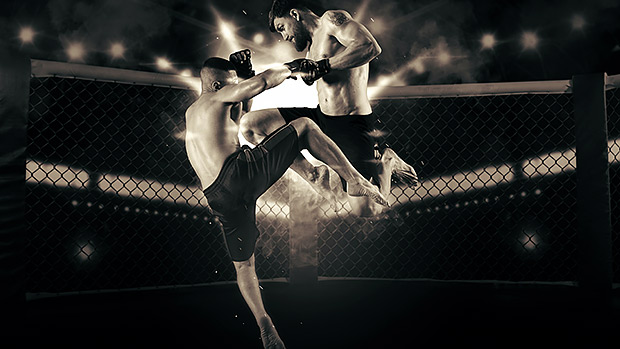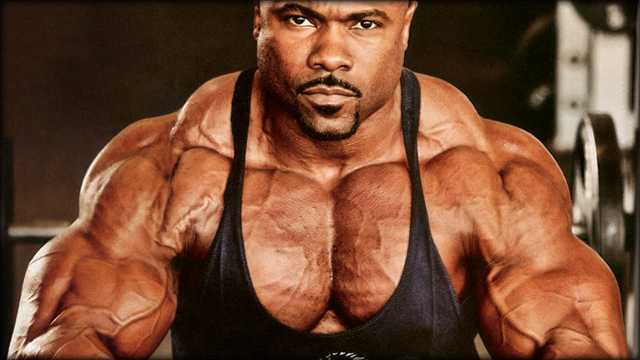Building muscle and strength is awesome, but not at the cost of getting slower and less powerful. Luckily, it doesn't have to be that way.
Here are three ways to improve your overall athleticism and add some "go" to your "show."
Rapid relaxation – having the ability to turn off certain muscles and reactivate them at the appropriate time – leads to massive increases in force production. This ability is what gives sprinters their speed, golfers their precision, and fighters their ability to produce tremendous power with a punch.
Think about the force measurements and EMG activity conducted on UFC fighters by Dr. Stuart McGill. While taking measurements for punches and kicks, a "double pulse" phenomenon was attributed to creating their devastating blows.
The first pulse was the initiation of the foot or fist strike. This was followed by relaxation of some core muscles as the speed of the arm or leg was increased.
The second pulse was timed to create stiffness throughout the entire body as the foot or fist hit the bag (1).
So the sequence for producing maximal power was: contract, relax, contract. The rapid relaxation in the middle was critical to increase the speed of the movement.
As a self-experiment, try bending your elbow while contracting your triceps as hard as you can. You should immediately notice the lack of movement around the elbow joint.
This is why "reciprocal inhibition" must take place during movement. While the muscle responsible for movement (agonist) contracts, the muscle responsible for preventing movement (antagonist) must relax. This leads to increased neural drive of the working musculature and ultimately allows for faster movement, and as a result, more force.

How to Train for Rapid Relaxation
The kettlebell swing can be used for developing the skill of pulsing contraction followed by rapid relaxation. Here's how:
- A burst of energy or "pulse" is used to begin the swing.
- Once the swing is around chest height, rapid relaxation must occur to re-hinge the hips and guide the kettlebell back between the legs.
- Another pulsed contraction is used to start the beginning of the next swing.
- Then the kettlebell swings go in a continuous cycle of turning on and turning off certain musculature in the right sequence to create pulsing contractions. That develops the ability to produce power.
Learning to use the property of elasticity in your muscles is a must if your goal is to run fast, jump high, lift a lot of weight, and just be all-around physically awesome.
Muscles are able to exert significantly more force if aided by a "pre-stretch" before contracting. This is one of the reasons why depth jumps are so effective at increasing power output. A rapid "pre-stretch" of the muscle helps store elastic energy which is used to then jump higher. This is also the same reason why we first dip down when doing the standing vertical jump, or can jump higher off one foot by getting a running start.
You also use elastic energy when doing any lift that begins with an eccentric/negative contraction. A great example is coming out of the hole during a squat. When you change from the eccentric contraction into the concentric contraction, elastic energy is stored in the musculature that can help "spring" you back to the top.
It takes timing and practice, but learning to feel the "spring" or "bounce" in the bottom of the squat – and timing your lift appropriately so you maximize the use of elasticity – will ultimately lead to a more impressive squat.
If your goal is to run fast, you can use elastic energy to your advantage by pulling your toes up when you run, and striking on the balls of the feet when your foot hits the ground. Pulling your toes up creates a pre-stretch in your calf muscle, which allows for more elastic energy to be released when your foot makes contact with the ground.
Speed is essentially a combo of producing massive amounts of force into the ground, followed by getting your foot off the ground as fast as possible. Using elastic energy in a pre-stretched muscle will aid in force production, and will result in decreased ground contact time. This will ultimately make you a faster athlete.

How to Train for Elastic Energy
Jumping rope is one of the best exercises you can do to train the property of elasticity in the lower body. Here's why:
- To jump rope well, you need to pull your toes up after each jump.
- This puts a pre-stretch on the calf which stores up elastic energy for the next jump.
- Jumping rope is a relatively low impact exercise so you can practice this skill often. Practicing frequently will lead to a better feel for the stretch reflex so you can make better use of your muscle's elastic property when running or jumping.
- Jumping rope also requires timing and coordination between the upper and lower-body musculature to produce force at the right moment.
Learning to properly brace is imperative for both spinal health and performance. Every exercise we do should be considered a "core" movement.
If you're lifting a heavy weight, you have to have a braced core to minimize energy leaks and have a better transfer of energy throughout the body. If you're running, you have to brace your core to control rotation through the torso. If you want to land safely from a jump, you have to brace your core to protect your lower back from the impact.
"Tuning" your brace so it's optimal for your exercise of choice is a skill that needs to be practiced consistently. Think of the breath you've inhaled like inflating the tires in your car. You need to take in the right amount of air to get 360 degrees of inflation through our torso. Taking in too little or too much air before your lift is like under-inflating or overinflating your tires. Neither is optimal to complete your lift.

How to Brace Your Core
When bracing for a heavy lift, take in a relatively deep breath and tighten your abs as if getting ready to take a punch to the gut. Get some expansion in the torso, but remember that a good brace is a little more nuanced than taking in as deep a breath as possible and pushing your gut out. Don't breathe out again until you're passing your sticking point on the concentric or lifting portion of the lift.
This same principle can be applied to field or combat sports. A great example of proper breathing and bracing is hearing the grunt after a hard hit in a tennis match. As the player goes to hit the ball, they sip in air and hold their breath briefly to create stiffness through the core. Once they've smashed the ball and start following through, they let out an audible grunt or exhale.
When bracing the core during short sprints or heavy loaded carries, think of "sipping" the air as you maintain tightness through the torso. Trying to breathe too deeply will lead to a loss of tightness which will slow you down. Not breathing at all will lead to passing out.
Practicing this skill consistently with attention to detail will lead to mastery of proper bracing and will make you a better athlete.
- Ultimate Back Fitness and Performance Stuart McGill. Backfitpro Inc. 2017:280–283.




